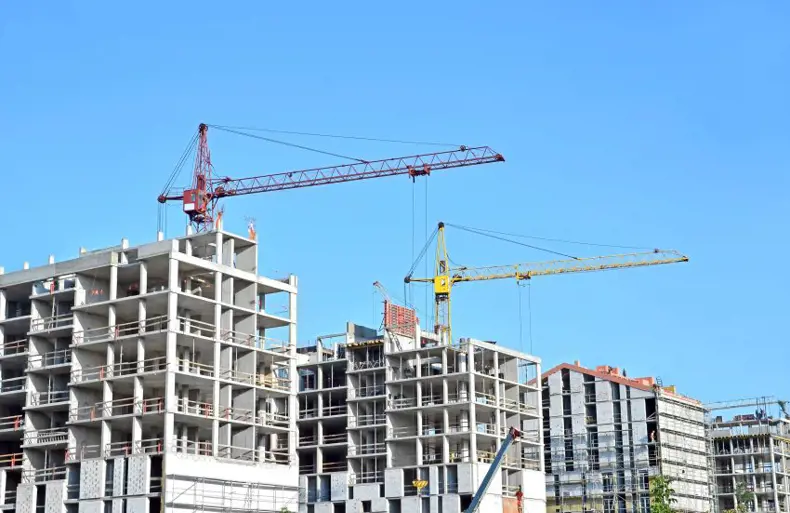More than a decade after the last peak in apartment-led development in Leeds’ city centre, apartment construction is undergoing a resurgence. But this time the story is very different. Now it is a proliferation of BTR schemes rather than a high water mark of build-to-sell developments.
Currently, in the city centre 1,862 apartments are under construction of which 1,397 are in five BTR developments, representing 75% of the total. This level of development is greater than in 2007 when 1,586 flats were built, and more than the average of 1,120 flats constructed per year between 2004 and 2007. To put the noughties growth spurt in context, there were less than 1,000 flats in Leeds in 2001.
Speculative investors buying off-plan were a major force driving the noughties flat building boom. But, naturally, this form of investment fell away in the crash. With lending from banks and investment funds from private investors drying up, so did the supply of new apartments. The only large-scale development that commenced between 2007 and 2010 was Isis’ Granary Wharf development of 282 flats, which were released on the market between 2010 and 2013. Between 2013 and 2016 no purpose-built apartment developments were undertaken in central Leeds. It was not until 2017 that the building of apartments returned to the city with the completion of two schemes; X1 on East Street with 147 flats and Tate House on New York Road in the Northern Quarter comprising 74 flats. But these build-for-sale developments are dwarfed by the build-for-rent schemes currently underway.
After the financial crash of 2007/2008, initially there was an over-supply of flats on the rental market. But, with the crash throttling back development in its wake, combined with Leeds’ economic resurgence, the outlook for the rental market has transformed with demand far exceeding supply. This time round it’s not buy-to-let landlords or speculators financially fuelling development. The driving force now is mainly institutional investors and large property companies attracted to the long-term steady income and relatively low-risk of BTR developments.
With economies of scale being an important factor, these BTR schemes are substantial. The first BTR development to be constructed in Leeds, Dandara’s scheme on Sweet Street, is close to completion and will provide 744 units. On a former Yorkshire Post site is a Grainger development of 242 flats, while L&G has a scheme at Mustard Wharf. With staggered completion dates and Leeds’ strong economic outlook, the city centre rental market will remain attractive to investors.
So, what is driving the change from build-to-sell to BTR? Nationally, there has been a fundamental shift. Renting has become more attractive due to owner occupation becoming increasingly unaffordable. Overlying this is Leeds’ economic and cultural success and the demand for city centre living where renters can be close to work and amenities.
Leeds is one of the largest employment centres outside of London with an active workforce of 498,000 people. Employment is expected to grow by 25,000 during the next decade, equal to Birmingham, and much higher than other major employment centres. The relocation by Channel 4 to Leeds alone is expected to create more than 1,200 new jobs during the next 10 years, adding over £1bn to the local economy. Leeds compared to its UK rivals has benefited from the highest rate of private sector growth of 6.1%, ahead of London at 4.4% and the national average of 2.5%, according to Cities Outlook for 2017.
Given that demand for high-quality rental accommodation recovered quickly after the crash, it is surprising that BTR development did not take place earlier. However, one issue delaying BTR development in Leeds has been the shortage of suitable sites. Grade A office space has been in short supply in the city centre, with commercial land values outstripping residential land and building focusing on delivering commercial development. As a result, residential development had initially been forced to take place on sites peripheral to the city’s densely developed commercial core.
Even though there is a significant increase in apartment numbers under construction and in planning, totalling 11,760 apartments, they should easily be absorbed by the city given its positive economic outlook, backed by the improved infrastructure and facilities now in place.
Looking ahead, Leeds’ strong economy and BTR’s appeal to institutional investors means this type of scheme will be the main driving force for new flats in the city centre. Build-to-sell is likely to play a more secondary role in the medium-term with pockets of development in the city.




